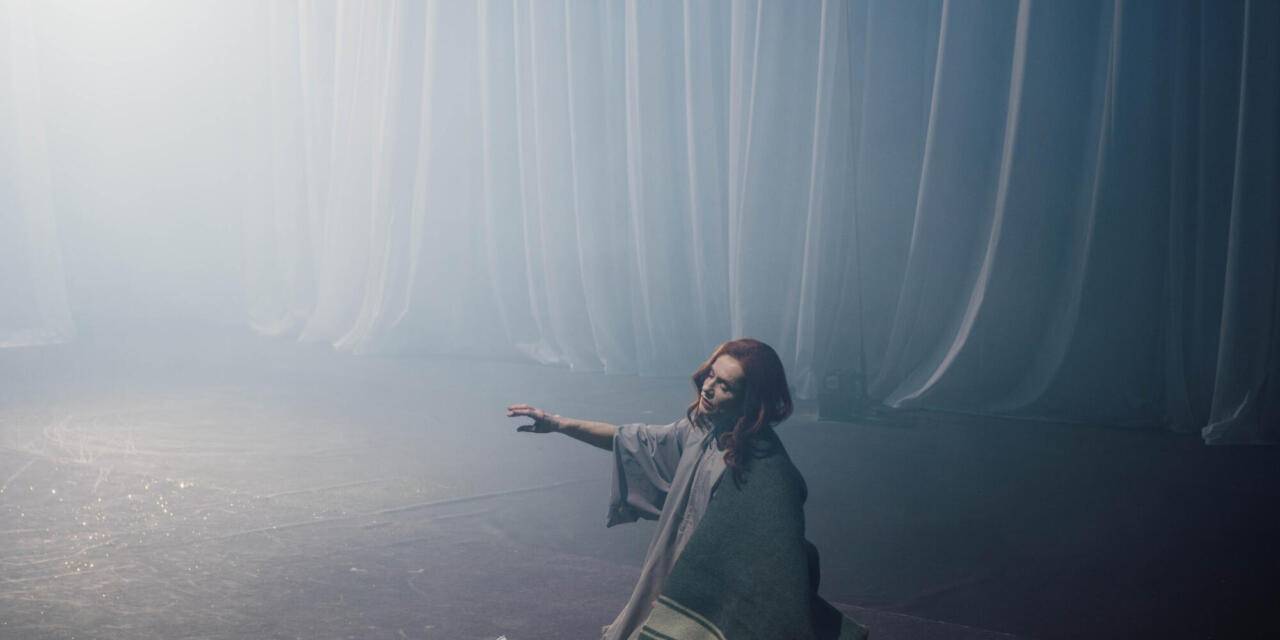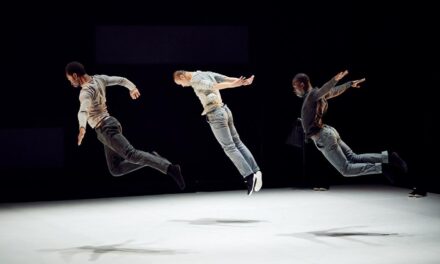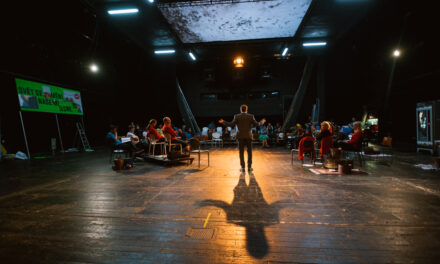Together with Wayne McGregor’s dance piece, UniVerse: A Dark Crystal Odyssey, Romeo Castellucci’s reimagining of Jean Racine’s Bérénice (first staged in 1670), with Isabelle Huppert in the titular role, is one of the highlights of Milan’s FOG Festival (see my review for more about FOG). Internationally acclaimed director and stage designer, Romeo Castellucci needs little introduction: over the last four decades he has developed a dramatic form founded on the union of the Sister Arts. In his theatre the role of the word is reassessed, and what emerges is a complex artistic form, made up of extraordinarily rich images sometimes conveyed by music, sculpture, painting and architecture. I was keen to learn how he would approach Racine’s classic tragedy, with an actor of the calibre and sensitivity of Isabelle Huppert; I still remember her stunningly powerful interpretation of Medea, directed by Jacques Lassalles in 2000, in which Medea’s monstrosity was underscored.

Isabelle Huppert in Bérenice, directed by Romeo Castellucci, at FOG 2024. Photo credits: Jean Michel Blasco.
Rather than staging the whole of Racine’s tragedy, which presents the fraught love triangle, involving Titus, the son of Vespasian, the Emperor of Rome, Antiochus, King of Commagene (now Southern Turkey) and Bérénice, Queen of Judaea, Castellucci has carved out what is substantially a monologue for Bérénice from the original text. The two kings, attractive, virile young men, appear on stage but never speak. It is left to their body language to convey their friendship but also their antagonism when Titus is told that Antiochus is also in love with the Queen. A chorus of twelve men, the Roman Senate, in a beautifully choreographed sequence, conjure up the political discord. At this point in the action, the nuanced shades of grey, constituting the half-light of the setting, turn to red. Still let’s return to Berenice, a tiny figure, who for most of the action stands, sits and moves around the stage alone, accompanied by rhythmic sounds and Scott Gibbon’s mesmerizing music. At times she slowly responds to a hand and arm that appear from the wings, another time, a radiator puts in a surprisingly incongruous appearance, to which Bérénice responds, moving close to it and seems to warm herself, as if craving her lost lover. We seem to enter her mind, as she reveals her dilemma; she loves Titus, but she has just discovered that he has given orders to remove her from Rome. In the aftermath of the death of Titus’s father – a highly dramatic and well-chosen moment to begin the action – he will be made Emperor, but the people refuse to accept the idea of a foreign Queen. In what is the staple of classic tragedy, Titus is torn by the classic conflict between love and duty, and opts for the latter, deciding to give up Berenice and show his people that he is a virtuous ruler. Still, what we witness in Castellucci’s adaptation is the impact this choice has on the queen. This theatrical magician accomplishes this by taking us into the deep of the character’s psyche, showing us the pain of her soul and her overwhelming despair, by deploying a fusion of words, sounds, music and lighting. As a huge curtain falls from on high, suggesting a luxurious dwelling, which is also a place of confinement, Huppert’s voice at times wavers and stumbles, emitting the words but also the sounds of somebody who is living through a devastatingly tragic moment in their life. Bérénice’s final lines, shouted at the top of her voice as she exits, “Ne me regardez pas!” (“Don’t look at me!”), signaled, for me, that we, as audience members, had invaded her most inner self, and it was time to leave her in peace.
Staging and Concept: Romeo Castellucci; music: Scott Gibbons; costumes: Iris Van Herpen; lighting: Andrea Sanson.
This post was written by the author in their personal capacity.The opinions expressed in this article are the author’s own and do not reflect the view of The Theatre Times, their staff or collaborators.
This post was written by Margaret Rose.
The views expressed here belong to the author and do not necessarily reflect our views and opinions.


















